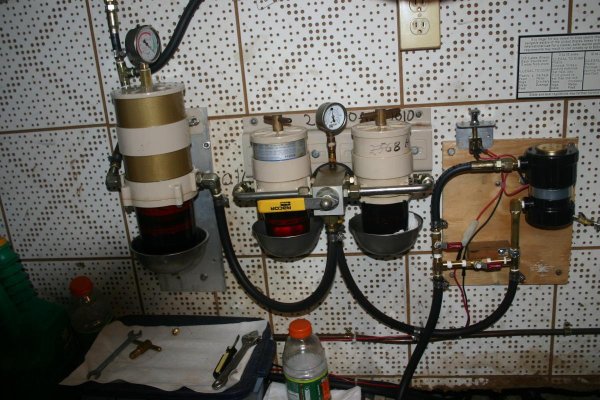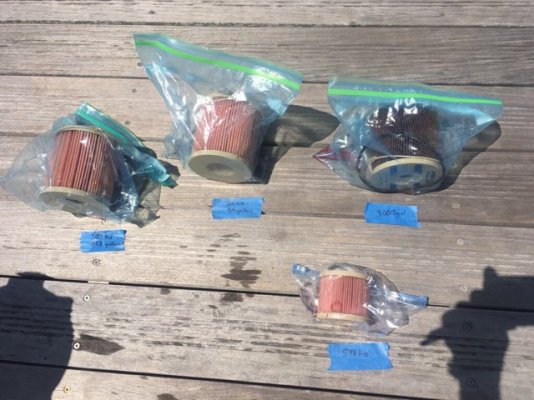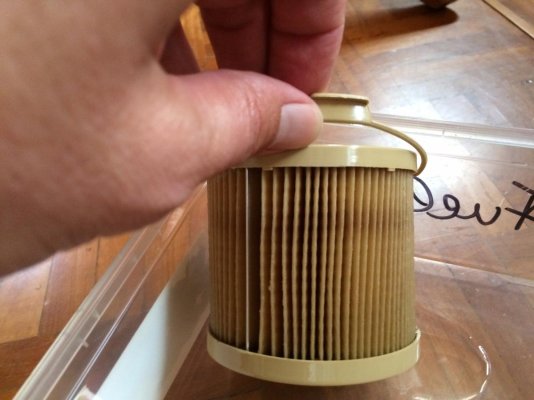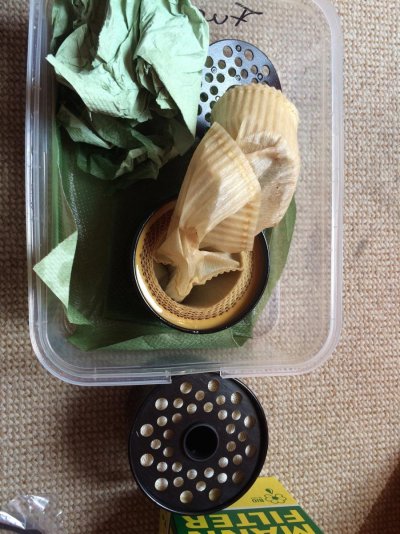There are two potential problems with relying on a vacuum gauge as a tool to tell when to change filters. Bourdon tube gauges are most accurate at the middle ranges of the scale. Lift pumps start to have problems around 2.5 psi well within the first third of most gauges range. Second problem is a full fuel tank can sometimes mask a bad filter due to the head pressure of the fuel itself depending on the location of the gauge. The t handle like on the 900 in the photo not the differential style on the manifold. 4' of fuel above a vacuum sensing gauge is about 2.5 psi. As the tank level drops vacuum will increase at a faster rate perhaps enough to start the formation of microbubbles. Think bends as in caissons disease. If the filter doesn't go into bypass and foul the secondary on engine filters then the next step on mr murphys punch list is probably a weakened lift pump diaphragm if you have one. An overflowing dipstick to start and a likely shutdown or worse to follow. Electronic diesels might continue to run that is until the secondary actually collapses and then probably stop for good.
Hands down the best way to gauge filter status is to periodically run engines up to wide open throttle and log the details.
What we have found to work best for us is to utilize a three stage filtration system. Here are the primary filters that I removed from service last month.
View attachment 65496
The dirtiest is a 10 micron transfer filter. It's filtered at least 3000 gallons into our day tank and transferred another 1000 between tanks over the last 8 months of its life. The two 30's are on a racor manifold and are at their six month change intervals. They have filtered around 2700 gallons each from the day tank. Our engines return 3 gallons for every gallon burned at cruise rpm and this too is returned to the day tank. The small racor in the corner has 548 hours on it. I have no idea on the gallons burned/returned but it has been in service for the last 10 months and is close enough to 12 months to warrant a changeout.
Rather than spend our time solving fuel problems we choose to be proactive and prevent them. This is what has worked best for us.
1: We dont bunker fuel. We only keep 90 days worth of fuel onboard. Storing and traveling with next years fuel onboard costs more than any money we might save by trying to get the best price and loading up. We burn just over 7 gallons an hour fully loaded, but we can cruise for two months in the Bahamas and average 5.5 gph carrying 1/3 load plus cruise skinnier water.
2: We prefilter all fuel used into a day tank via a 10 micron racor primary filter utilizing a small transfer/priming pump.
3: We use additives as needed.
4: We change ALL filters ANNUALLY at the MINIMUM.
5: We are not afraid to run at WOT. If there are any filter issues they reveal themselves before we see any vacuum. Every hour we transfer fuel to our day tank. This normally takes between 7 and 13 minutes depending on the fuel levels in the supply tank and the machinery running. If it takes much longer the filter is starting to get plugged and its probably getting near time for a new element. We have a routine and log the results. Rpm,speed, various temps, shaft, coolant, oil, exhaust all can also be quite helpful in diagnosing future issues.





